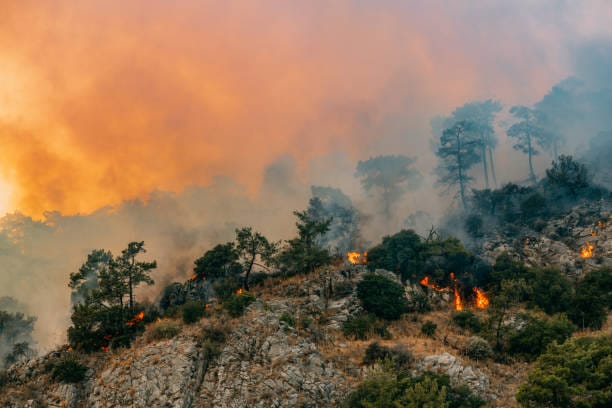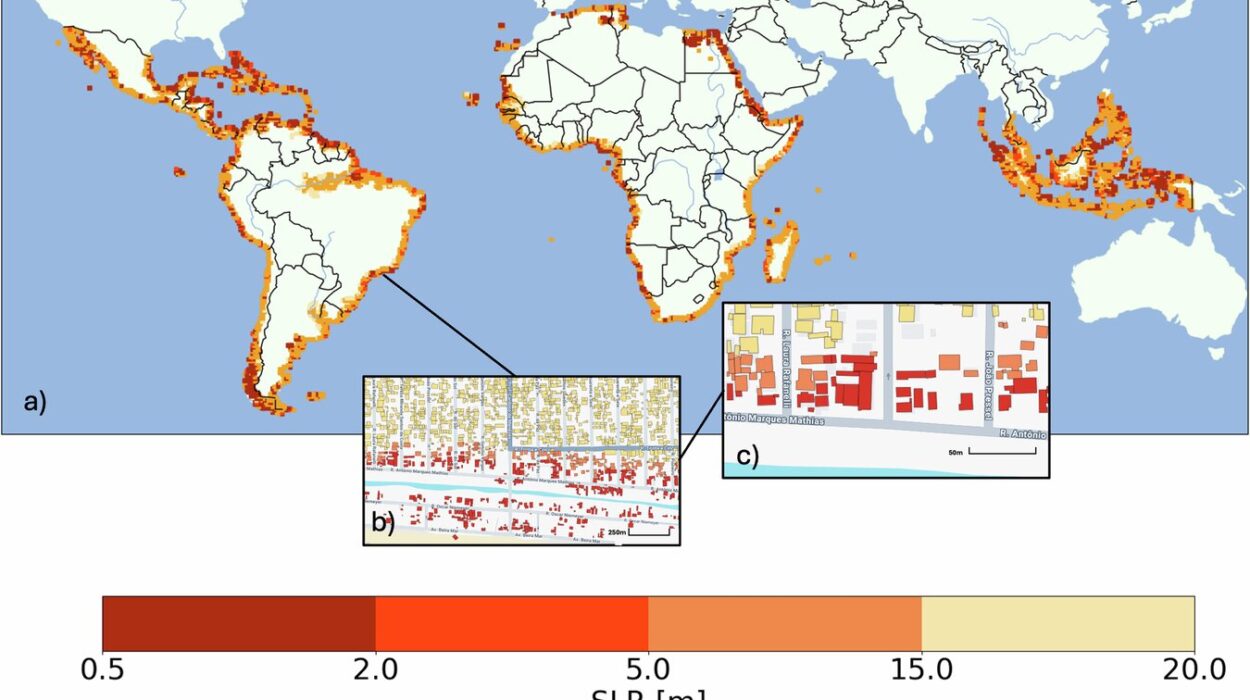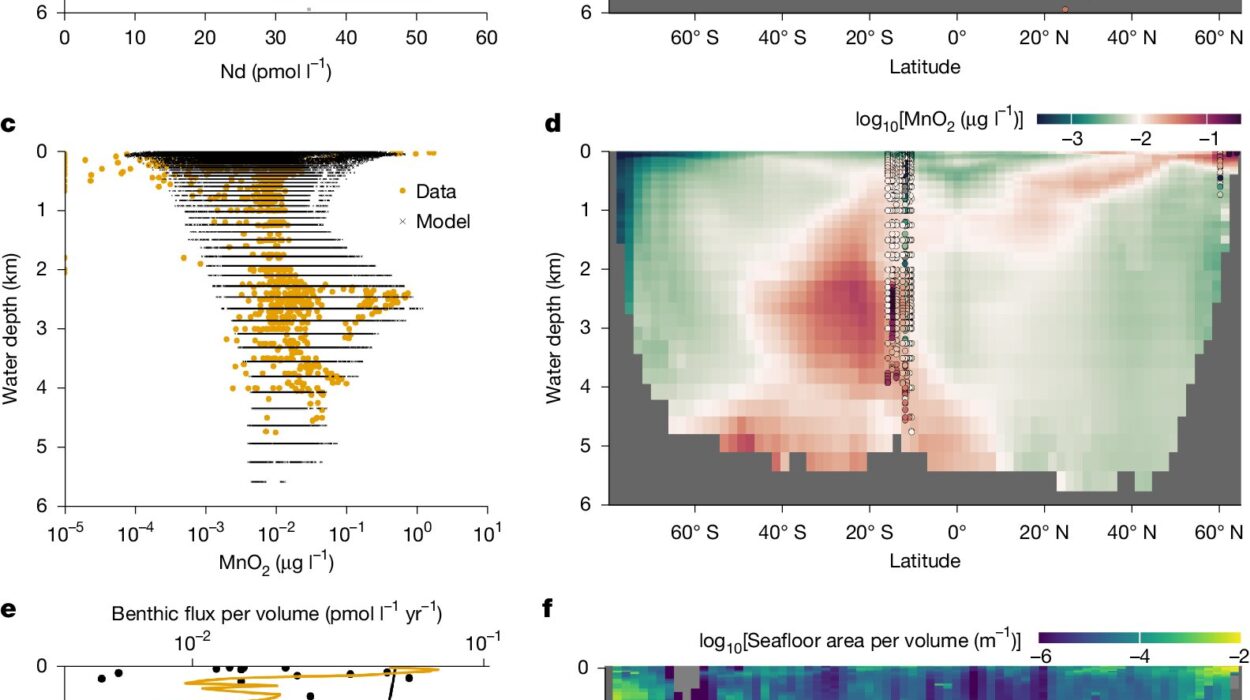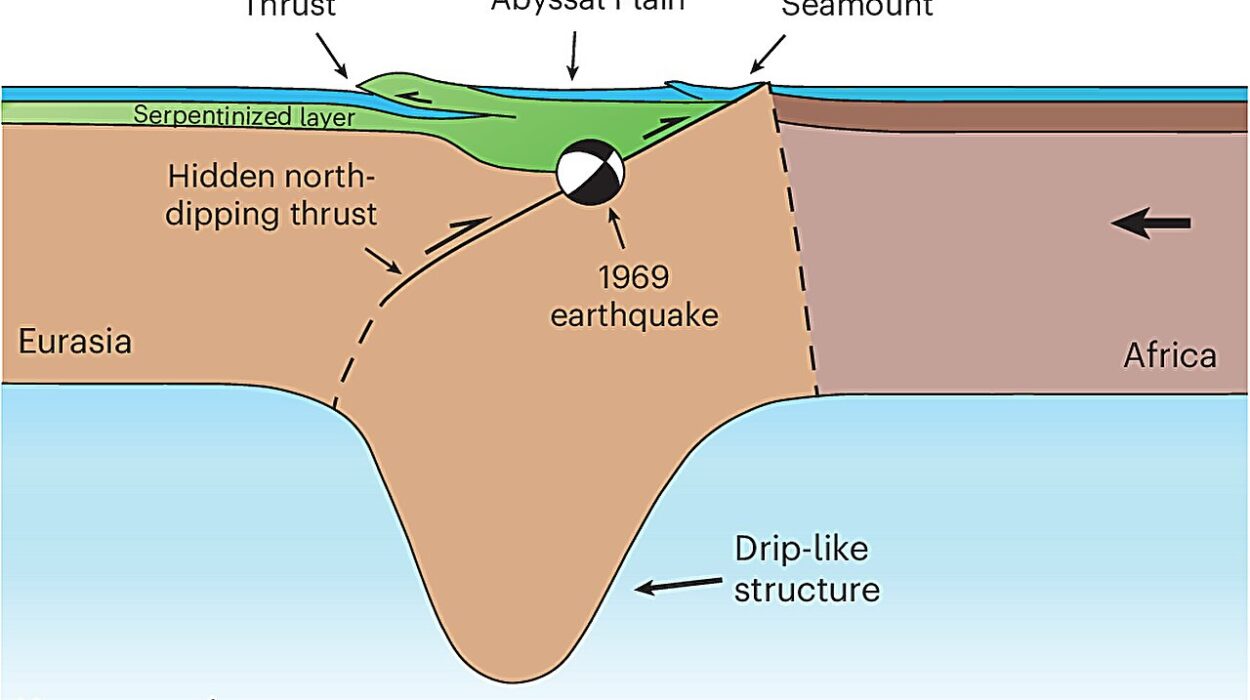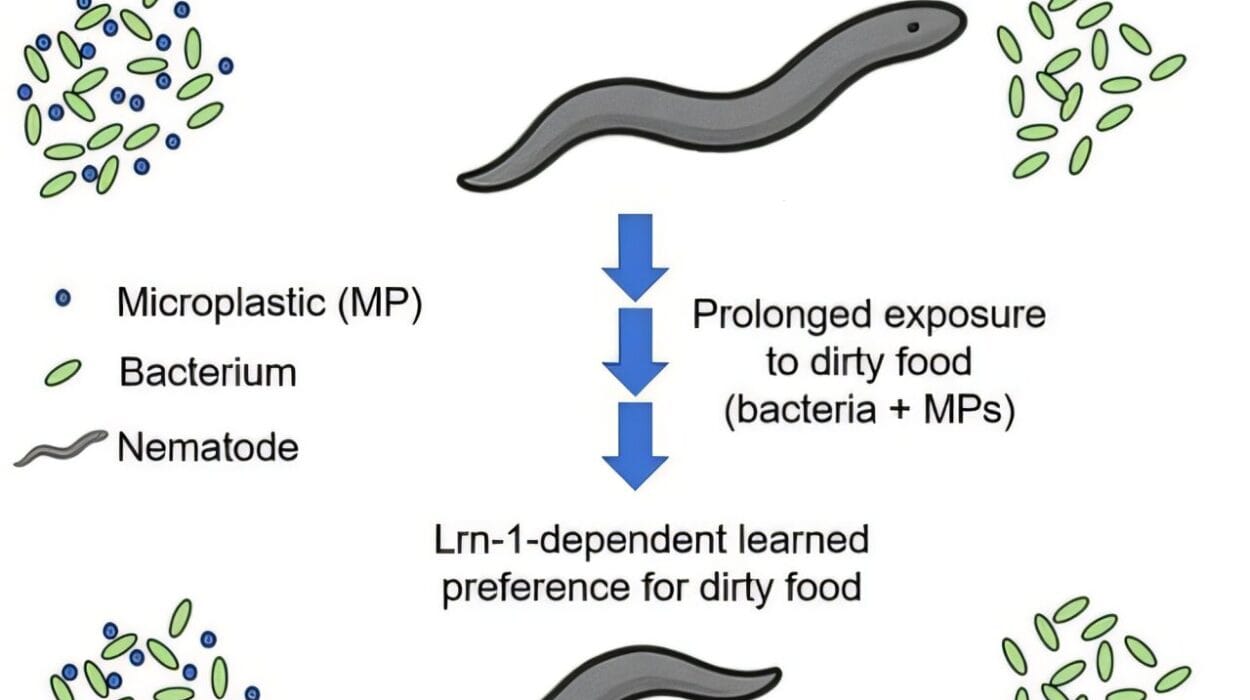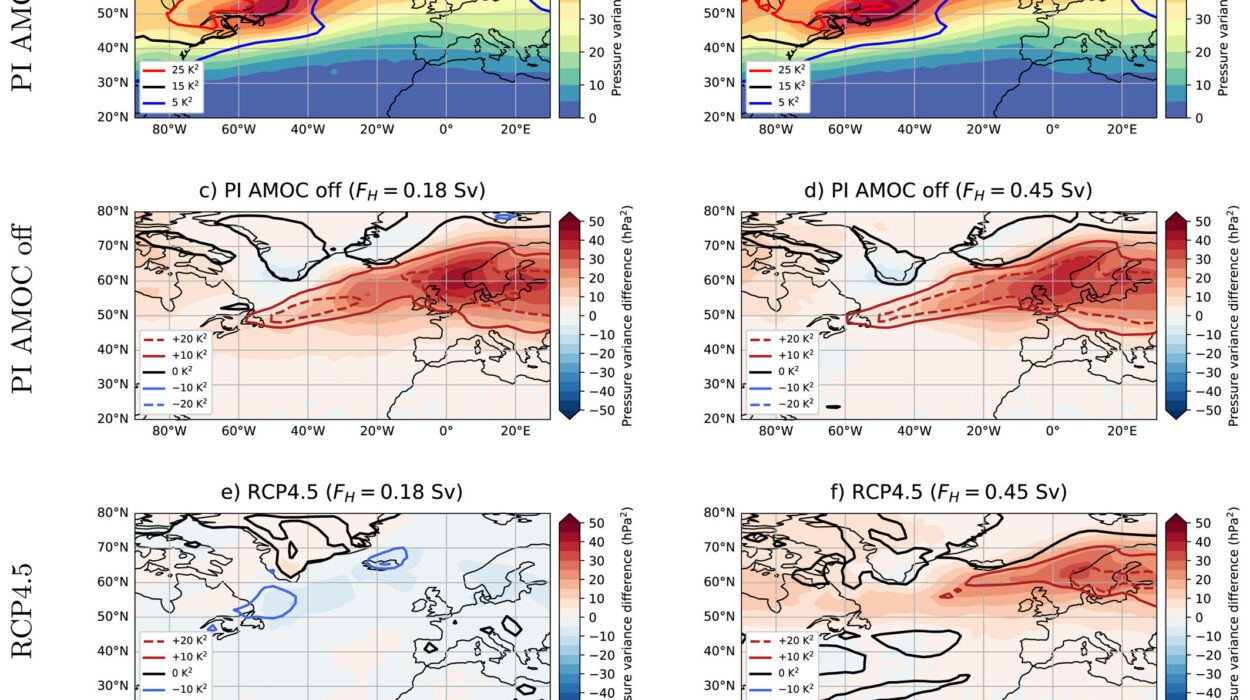The Earth is running a fever—and it’s not a metaphor. Over the past century, the planet’s average surface temperature has risen by more than 1.2°C (2.2°F), with most of that warming occurring in just the last few decades. This may sound modest, but it has already set off a cascade of changes across the globe, from melting glaciers and burning forests to swelling oceans and erratic weather. These are not predictions anymore. This is not the language of distant futures or speculative models. Climate change is no longer a slow-motion story. It is now.
You can feel it in the air, heavier and hotter. You can hear it in the silence after a bird call that never comes. You can see it in the headlines, in the satellite images, in the cracked soil and the flooded streets. Scientists warned us, and now the science is unfolding in real time—raw, relentless, and all around us.
Oceans on the Rise, Ice in Retreat
One of the most visually arresting and scientifically indisputable effects of climate change is the accelerated melting of ice. Greenland and Antarctica, home to the two largest ice sheets on Earth, are bleeding ice into the oceans at rates once thought unimaginable. Greenland alone is now losing approximately 270 billion tons of ice each year. This meltwater, combined with the expansion of warming seawater, is causing sea levels to rise—faster than at any point in recorded history.
In the Arctic, sea ice that once blanketed the pole year-round is vanishing with alarming speed. Where once there was a gleaming white cap reflecting sunlight back into space, now dark ocean absorbs the sun’s energy, accelerating warming even further. This feedback loop—warming causes ice loss, which causes more warming—is one of the terrifying self-reinforcing processes that climate scientists have long feared.
Glaciers from the Himalayas to the Andes are shrinking. These frozen reservoirs provide water for billions, feeding rivers and regulating seasonal flows. Their decline threatens not only ecosystems but also agriculture, hydroelectricity, and human survival.
The Swelling Seas
As ice melts, oceans rise—not only due to the added water but also because of thermal expansion. Warmer water takes up more space. And warmer oceans mean more than just higher tides; they also fuel stronger storms and disrupt marine ecosystems.
Today, coastal communities from Jakarta to Miami are facing the reality of sea-level rise. Floods that were once called “100-year events” are now happening every few years. In some places, they’re becoming regular high tide occurrences—what scientists call “sunny day flooding.” Cities are scrambling to build seawalls, raise roads, and install pumps, but in many regions, it may already be too late. Entire island nations, like the Maldives and Kiribati, are eyeing the possibility of becoming climate refugees, their homelands swallowed by saltwater.
Storms with a New Fury
Storms are nothing new to the Earth. But the storms we’re seeing now are different. Warmer air holds more moisture, and warmer seas feed more energy into cyclones, hurricanes, and typhoons. The result: stronger, wetter, slower-moving storms that linger longer and devastate wider areas.
Hurricane Harvey in 2017 dumped over 60 inches of rain on Texas. Cyclone Idai in 2019 flattened entire communities in Mozambique. Typhoon Haiyan in 2013 destroyed swaths of the Philippines with winds over 195 mph. These aren’t isolated incidents—they are part of a pattern. Climate change doesn’t create storms from scratch, but it acts like steroids in an athlete’s body: making them more extreme, more erratic, and far more destructive.
And it’s not just tropical systems. Supercharged winter storms, atmospheric rivers in California, and intensified monsoons in South Asia are all part of this new climate reality. The atmosphere is acting differently because it is, quite literally, different.
Wildfires: The New Normal
There was a time when fire season was seasonal. Now it stretches for most of the year, in more places than ever. California, Greece, Canada, Australia—no forest seems safe. Heatwaves dry out the land. Lightning or human activity provides a spark. And the winds fan the flames into infernos that leap across mountains and consume entire towns.
The 2019–2020 Australian bushfires killed or displaced an estimated three billion animals. Entire ecosystems were incinerated. In 2023, Canada experienced the worst wildfire season in its history—millions of hectares scorched, smoke choking the skies from New York to Norway.
Fires are natural in many landscapes. But the frequency, intensity, and scale we’re seeing now are not. They’re a product of hotter temperatures, drier conditions, and shifting precipitation patterns—all hallmarks of a changing climate.
Heatwaves: The Silent Killers
Heatwaves may not inspire the same media attention as hurricanes or wildfires, but they are among the deadliest consequences of climate change. The 2003 European heatwave killed more than 70,000 people. More recently, the 2021 heat dome over the Pacific Northwest shattered temperature records and led to hundreds of deaths in places like Portland and Vancouver—cities unprepared for triple-digit heat.
Human bodies are remarkably adaptable, but extreme heat tests our limits. It strains infrastructure, overwhelms hospitals, disrupts agriculture, and degrades air quality. And it’s getting worse. Climate models predict that by mid-century, some parts of the world could become nearly uninhabitable for part of the year due to extreme heat and humidity combinations.
This is not a slow simmer. This is a planet overheating, one brutal summer at a time.
Disrupted Ecosystems and the Great Migration
As the climate shifts, so too do the living things that depend on it. Species are migrating to higher elevations and latitudes in search of cooler habitats. Flowers are blooming earlier. Birds are changing their migration schedules. Coral reefs, stressed by warmer waters and acidification, are bleaching and dying.
One of the most visible signs of ecosystem disruption is the collapse of coral reefs—the rainforests of the ocean. In Australia, the Great Barrier Reef has experienced repeated mass bleaching events. These vibrant underwater cities, home to a quarter of all marine species, are fading to white as the symbiotic algae they rely on flee from heat stress.
On land, forests are being transformed. Insect outbreaks, once kept in check by cold winters, are killing vast swaths of trees. In the American West, bark beetles have turned millions of acres into dry tinder. In the Arctic, thawing permafrost is altering landscapes and releasing vast quantities of methane—a potent greenhouse gas that further accelerates warming.
Entire food webs are being destabilized. And with each shift, there’s a cost. Not only to biodiversity but to the human communities that depend on these systems for food, medicine, and cultural identity.
Climate Refugees and the Human Toll
Behind every climate disaster are human lives upended. Families forced to flee their homes not because of war or persecution, but because the land can no longer support them. Saltwater intrusion poisons wells. Droughts wipe out crops. Storms destroy villages. And slowly, inevitably, people move.
The United Nations estimates that by 2050, there could be more than 200 million climate migrants. These are not statistics—they are mothers, fathers, children seeking safety and dignity in a world being reshaped under their feet.
We are already seeing the effects in Bangladesh, where rising seas and cyclones push people toward urban slums. In Central America, climate-linked crop failures drive migration northward. Even in wealthy countries, wildfires and floods displace tens of thousands. Climate change does not respect borders. It is redrawing the map of habitability in real time.
Agriculture Under Pressure
Farming has always been at the mercy of the weather. But now, the weather has changed.
Droughts are longer and more intense. Rainfall is erratic. Pests and diseases expand into new regions. Crops fail not just because of too little water, but sometimes too much, delivered all at once. Heatwaves hit during critical growing periods, reducing yields. And in many tropical regions, staple crops like maize, rice, and wheat are nearing their temperature thresholds.
This isn’t just a threat to farmers—it’s a threat to food security. A warming planet could see reduced yields at the same time as a growing population increases demand. The risk of famine and conflict over food rises in tandem with the thermometer.
And it’s not only plants. Livestock suffer from heat stress. Fisheries collapse as ocean temperatures rise and oxygen levels drop. The systems we rely on to nourish humanity are buckling under the weight of a climate they did not evolve for.
The Feedback Loops of a Warming World
Perhaps the most unsettling aspect of climate change is its ability to feed on itself. Melting permafrost releases methane. Dying forests stop absorbing carbon. Burning peatlands emit vast stores of CO₂. The Amazon, once a carbon sink, may be turning into a carbon source.
These feedback loops mean that even if we stopped emitting greenhouse gases tomorrow—a fantasy, to be sure—the planet would continue warming for decades. This does not mean we should give up. It means the urgency is greater than ever.
Every fraction of a degree matters. Every decision we make—from policy to personal action—can either slow the spiral or accelerate it.
Tipping Points and Unknowns
Science thrives on uncertainty, not because it welcomes ignorance, but because it respects complexity. And climate change is complex. We know the direction of travel, but not all the curves in the road. That’s where tipping points come in—thresholds beyond which change becomes sudden, irreversible, and catastrophic.
What happens if the Greenland ice sheet collapses? If the Amazon rainforest dies? If deep ocean currents shut down? These are not plotlines from disaster movies. They are possibilities outlined in peer-reviewed journals, debated at climate conferences, and increasingly part of national security briefings.
The frightening truth is that we may already be closer to some of these tipping points than we realize.
A Window of Hope
And yet, amid the gloom, there remains hope. Science has not only warned us—it has equipped us. We know what needs to be done. We have the tools: renewable energy, regenerative agriculture, reforestation, smarter cities, cleaner transportation. Solar and wind are now cheaper than coal in many parts of the world. Electric vehicles are on the rise. Young activists are shifting the moral compass of nations. Legal systems are holding polluters accountable. Innovation is blooming.
The question is no longer whether we can fight climate change. It’s whether we will choose to.
We are living in a decisive moment. A brief window when action can still shape the outcome. The decisions we make in the next decade will echo for centuries. Will we rise to the challenge? Will we preserve what is sacred—not only for ourselves, but for generations yet unborn?
The Earth, Still Beautiful
Even now, the planet pulses with wonder. The auroras still dance over polar skies. Whales still sing in the deep. Rainforests hum with life. The Earth has not yet given up on us.
And perhaps, if we listen—truly listen—to the science, to the silence of vanishing glaciers, to the songs of displaced people, and to the wisdom of nature itself, we might yet learn to live not against the Earth, but with it.
Climate change is real. It is dangerous. But it is not destiny.
The story of our future is still being written.
